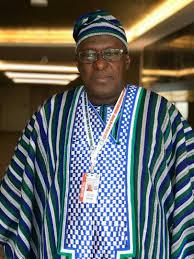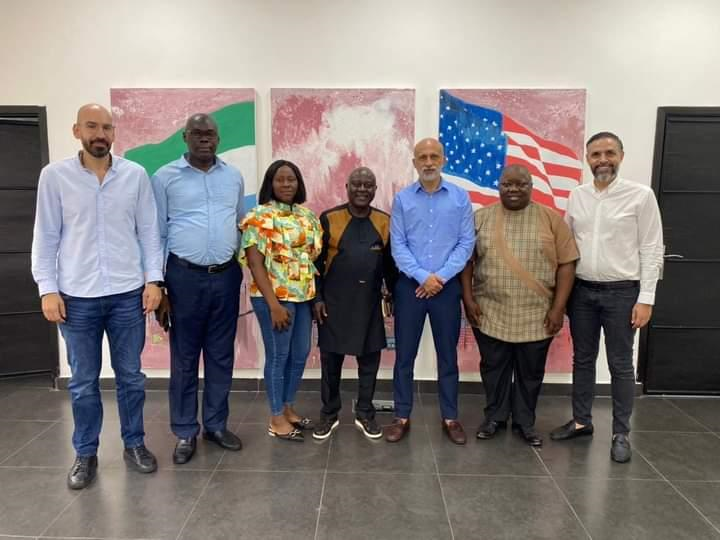Towards a unified African market
Newly-signed tripartite free trade area to bring together EAC, COMESA & SADC blocs
For several years, experts from the three largest trading blocs in Africa — the Southern African Development Community (SADC), the East African Community (EAC) and the Common Market for Eastern and Southern Africa (COMESA) — were locked in intense negotiations over a free trade agreement whose aim is to bring about a unified and liberalized single market. The talks finally bore fruit on 10 June 2015 when 26 African countries signed the Tripartite Free Trade Area (TFTA) agreement in Cairo, Egypt.
Under this agreement, all the 26 countries, with a combined gross domestic product (GDP) of about $1.3 trillion and a population of 565 million, will merge into a common market and eliminate tariff lines and trade barriers. The participating countries will benefit from liberalized intra-regional trade, which is expected to boost the flow of goods and services. When implemented, the free trade area will constitute about half of Africa’s GDP, half of its population and will cover a combined landmass of 17 million square kilometres, about the size of Russia.
At the moment, however, only three of Africa’s eight regional economic communities are participating in the TFTA. Non-participating economic blocs include the Arab Maghreb Union, the Economic Community of West African States, the Intergovernmental Authority on Development, the Economic Community of Central African States and the Community of Sahel-Saharan States. For now, these blocs are not participating in this new initiative for political and economic reasons. The Abuja Treaty of 1995 signed by 51 African countries mandates all regional economic communities to join the group by 2017 in anticipation of an African Economic Community by 2028.
“The conditions [to form the TFTA] have never been better,” says Sindiso Ndema Ngwenya, the secretary-general of COMESA. “We have improved governance, and the very fact that we withstood the global financial crisis of 2008 attest to sound macroeconomic policies. This is what is giving us resilience,” he told Africa Renewal in an interview.
The benefits of the free trade area are numerous. “It has the potential to increase economies of scale [which are the cost advantages that can be derived from size of a market and production] through integration, will increase demand for the region’s goods and services and make the region more attractive to foreign investments,” says Jason Kapkirwok, senior director of TradeMark East Africa, an African non-profit company that supports trade growth in East Africa. “This would in turn create more jobs and catalyze technology transfer.”
Trade between African countries, as a share of the continent’s total trade has hovered at 10-12% for decades, but some experts argue that the actual figure is much more than that because a big part of the continent’s trade is conducted informally and at times across porous borders where it’s not recorded. The proportion in Europe and Asia, by contrast, is close to 60%.
Leading the tripartite
South Africa and Egypt, two of Africa’s biggest economies in terms of manufacturing and services, are the main forces driving the TFTA, followed by Kenya and Mauritius. Angola, Mozambique, the Democratic Republic of the Congo and Ethiopia could also play key roles in fostering the region’s economy as they are expected to absorb a large share of the region’s exports while supplying cheaper inputs such as electricity, petroleum, gas and other raw materials.
Even as the bigger economies take advantage of the opportunity of an expanded and liberalized market, less advanced economies could also benefit from the TFTA. For example, countries in the EAC, such as Kenya and Uganda, have the most advanced customs union, which they will be expected to deploy to increase the pace and depth of integration.
However, experts caution against high expectations of the TFTA because of existing hurdles that may slow down its implementation. For instance, the current low level of intra-regional trade in Africa could impede attempts to boost trade volume within the single market. In addition, some countries have overlapping memberships in the regional economic blocs, leading to incoherent national trade policies. Also, there are varying levels of socioeconomic development across countries, particularly in industrial, infrastructure and energy sectors, making it difficult for some participating countries to implement the agreement as speedily as others.
Further, economies represented in this and other trade agreements are dominated by agricultural production; the UN Conference on Trade and Development notes that “the narrowness of African production and export structures and relative dependence on primary commodities are inhibiting factors to the boosting of intra-regional trade in Africa.”
Open trade with a country with very different economic characteristics will yield predictable results — however, for African farmers, opening to trade with their similarly agricultural neighbours is a fraught prospect. When considering increased trade between two agriculturally dominant African countries, it is not immediately apparent which country will have the comparative advantage in its existing agricultural production — this uncertainty stunts regional economic integration.
Experts have argued that there is a lack of political will in some countries to implement the TFTA agreement. Already, not all participating countries have ratified the agreement, although they have until the end of the year to do so. Even South Africa, one of the most influential within the block, along with Botswana, Lesotho, Mozambique and Zambia, have yet to sign the TFTA, which must be ratified by two-thirds of the participating countries before it comes into force by the expected date — January 2016.
Even if two-thirds of the countries do not ratify the agreement, Mr. Ngwenya, the COMESA official, says the ball will keep rolling. “In the event that not all the 26 countries sign the tripartite, we shall use the principle of variable geometry in terms of implementation, because those that are ready must move on. If we allow one or two countries that are not ready to hold up the process, then we will never move.” The principle of variable geometry means that members from an integration scheme will be flexible enough to adopt different speeds to make progress.
A major sticking point for many undecided countries is the TFTA’s elimination of trade taxes, which serve as a major supplier of domestic revenue. The TFTA requires all countries to open up their markets to duty-free imports, which could spell some revenue loss. To this point, the TFTA includes phased reduction of tariffs, specifically the immediate liberalization of just 63% of tariff lines, to address such revenue losses.
Overall, there are many enticing elements in the TFTA. By harmonizing policies on trade, movement of business persons and industrial and infrastructure development, the agreement will expand the market for goods and services and subsequently promote greater intra-regional trade. Mr. Kapkirwok hopes that all forms of trade barriers such as import and export restrictions will eventually be eliminated.
Africa on international trade scale
While the TFTA may accomplish its goal of an expanded market for countries in the single trading bloc, Africa still needs to be more prominent in the international trade arena, says Mr. Kapkirwok. Africa should implement prudent macroeconomic policies and regulatory reforms, he says, and countries should embrace good governance and establish competent institutions.
Currently, massive infrastructure deficit impedes trade and development, according to Mr. Kapkirwok, and underscores the need for Africa to understand properly the international markets, and to build better trade facilitation and services programmes across all the regional economic communities.
Overall, the hope is that TFTA’s success will strengthen one of Africa’s ambitions — the establishment of a single market.
By Sara Canals,courtesy of Africa Renewal
Stay with Sierra Express Media, for your trusted place in news!
© 2016, https:. All rights reserved.






